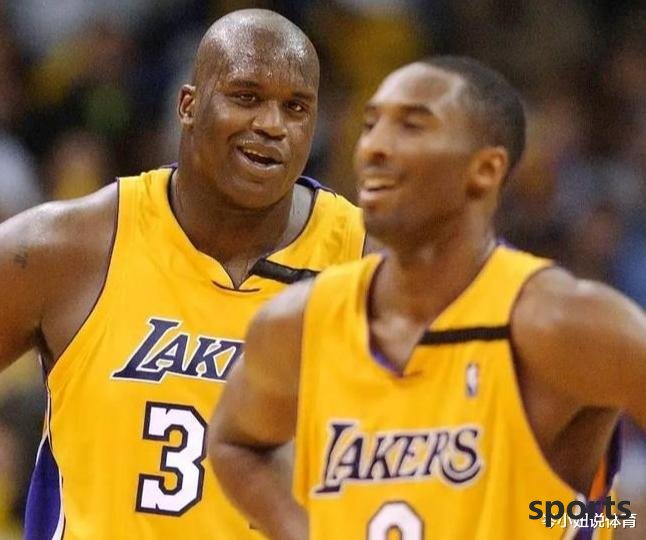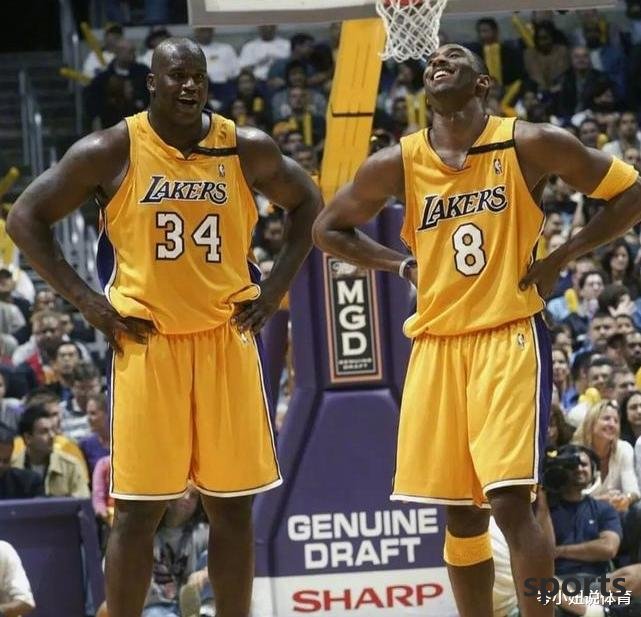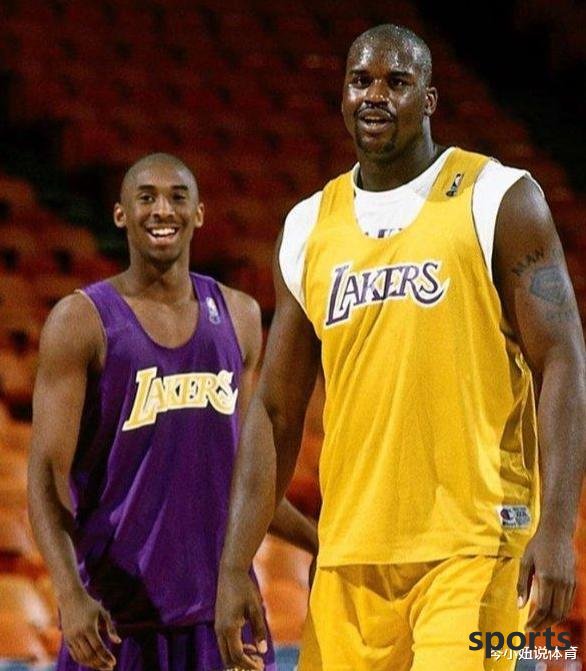Addy Dports > Basketball > If the OK group is not separated, they can at least build another dynasty team.
If the OK group is not separated, they can at least build another dynasty team.
On July 4, in the long history of the NBA, few duo groups can dominate an era like the "OK group". The collaboration between Shaquille O'Neal and Kobe Bryant brought three consecutive championships to the Los Angeles Lakers (2000-2002), establishing the first dynasty of the new century. However, due to personality conflicts, ball rights distribution issues and management decisions, the legendary group parted ways in 2004. O'Neal went east to Miami, and Kobe carried the Lakers flag alone. But assuming that the history is rewriting, the two have no conflicts, the management handles the relationship properly, and there are no major injuries, the OK combination is completely possible to continue its glory and even create another dynasty.

First of all, from the perspective of lineup strength, the peak period of the OK combination is highly overlapping. O'Neal was in absolute dominance from 2000 to 2002 and was the most destructive inside behemoth in the league, while Kobe quickly grew into a top outside scorer since 2000. In the 2003-2004 season, Kobe averaged 24 points per game. Although O'Neal declined slightly, he still contributed top data of 21.5 points + 11.5 rebounds. More importantly, the technical characteristics of the two are perfectly complementary: O'Neal's crushing ability in the inside attracts double-teams, creating singles or open opportunities for Kobe; Kobe's outside threat can open up space for O'Neal. If the two remain harmonious and the Lakers management continues to strengthen role players around them (such as retaining Caron Butler or Lamar Odom who was sent away in 2004 when trading O'Neal), the Lakers will remain the most competitive team in the West.

Secondly, the alliance pattern at that time provided the Lakers with a window period to continue the dynasty. After 2004, although there were many strong teams in the West, they lacked absolute overlords. The Spurs' "GDP" combination is getting older, the Suns' running and bomb system has defensive shortcomings, and the Mavericks (Mavericks) have not yet broken through the psychological level. In the Eastern Conference, the Pistons' grassroots champion is difficult to replicate. The Heat quickly declined after winning the championship in 2006, and the Cavaliers' James is still in the growth stage. If the OK group stays in the team, the Lakers are likely to win at least two more championships between 2004 and 2007. Especially before the establishment of the Celtics Big Three in 2008, the league lacked super teams, and the Lakers may even achieve a "second three-game championship."
From the perspective of personal development, the improvement of Kobe and O'Neal's maturity will further amplify the power of the combination. After 2004, Kobe entered the peak of his technology, and won the score leader in succession from 2005 to 2007, while O'Neal gradually transformed into a more efficient "short-term explosive" center (referring to his performance at the Heat in 2006). If the two coexist, Kobe doesn't need to take on a big shot like in reality. O'Neal can also reduce the regular season consumption and make a strong debut in the playoffs. Phil Jackson's triangular offensive system can allocate ball rights more flexibly, avoiding the "one-on-one" dilemma of the 2004 finals.

In addition, the decisions of the Lakers management are crucial. In reality, Jerry Bass chose to rebuild with Kobe at the core, partly due to concerns about O'Neal's weight and age. But if O'Neal is retained, the Lakers can create a more balanced lineup by introducing quality point guards (such as Paul Gasol's chips for Kidd or Billups in 2007) and 3D players. After Gasol joined in 2008, the Lakers quickly returned to the finals. If O'Neal at the end of his peak was in the inside, paired with Kobe and Gasol, the Lakers might even have the upper hand in the confrontation with the Celtics and the Magic from 2008 to 2010.
Of course, the challenge still exists. O'Neal's weight problem may exacerbate the risk of injury, Kobe's paranoid personality needs to be continued to run in, and emerging forces in the West (such as the Warriors in 2007 and the Nuggets in 2009) will also pose a threat. But referring to other long-lived dynasties in history (such as the Lakers in the 1980s and the Bulls in the 1990s), the continuity of the superstar combination can often offset the aging of the lineup. If the OK combination remains healthy, it can win at least two more championships from 2004 to 2007, and even extend its dominance to 2010, connecting with Kobe's later two consecutive championships (2009-2010), forming the "Lakes Era" spanning more than ten years.
In the end, the disintegration of the OK combination is not only a regret for Lakers fans, but also an "unsolved mystery" in NBA history. Their separation stems from the complex game of character, money and power, rather than a purely problem of strength. If the two can find a way to coexist like Duncan and Parker, Jordan and Pippen, the NBA's championship map may be completely rewritten. As Kobe said in his later years: "Shake and I could have won more, but we were not mature enough at that time." This hypothetical history eventually became one of the most imaginative "ifs" in the basketball world.
Related Posts
Horford: I m just old, but I still have the ability to affect the game. The Warriors have the best piece of the puzzle to win the championship.
BasketballAs the new season approaches, the NBA preseason has begun one after another, and the two Western Conference powerhouses, the Los Angeles Lakers and the Golden State Warriors took the lead in the battle. The two teams did not have much lineup changes...
moreThe Rockets picked up a bargain! The new No. 4 scored 5 three-pointers, and Uduka added another card
BasketballMazula admires DJ Davidson's efforts very much, and Smart and Pritchard helped the second round pick a lot. When Davidson got the Development League MVP, the Celtics decided to give him a formal contract as a reward. Although Davidson's cont...
moreDecide the second follow-up! James s smile training is expected to come back in the opening game, Redick: No one in the team panics
BasketballJames, who made the gimmick, decided that two ended up being just a commercial. James even imitated the scene and lines of the decision. He said: "It's this autumn, brother, it's very difficult. This autumn, I will bring my talent to He...
more
Hot Posts
- Perkins: I publicly reminded Westbrook to control his emotions three or four years ago, otherwise he might not have a ball to play.
- Rockets 8 for 1 Durant ranks first! ESPN announces 15 votes: Curry becomes the best in the United States
- Keep the present and win the future. Is it reasonable to have three of the strongest teams in the past five years in front of the Rockets?
- Leonard s Yin-Yang contract has caused heated discussion! He was ridiculed to make two money without working. The Lakers missed him in 19 years.
- Suns Exclusive: Some Manchester United first-team players think 39-year-old three-pointer Heaton deserves the chance
- 19+5 in 24 minutes! Doncic s debut performance was good: three-pointers are very accurate
- Warriors sign Curry + Payton Jr. at the base salary: Curry brothers join forces to renew the contract
- Four teams are rushing to demand James? The rumor of the trade of 40-year-old James has triggered the NBA offseason.
- Behind the Celtic Eagles Trading: Typical cyclical interleaving transactions, the former values the future and the latter focuses on the present
- American News: The Heat s odds surge with Durant s price, and the transaction may be completed within 72 hours
Recent Posts
-
Duan Ran: Thunder chased for a quarter and a half& no chance was given at critical moments, and it is a pity that the Pacers were reversed
-
Warriors official: hosting new season media day
-
The NBA storefront is too difficult to find. James is 40 years old, Curry is still holding on at the age of 37! He is really no successor
-
Really no fate in the final? I have never missed the playoffs, but fell in the semi-finals four times, and averaged 34+6 even a game.
-
Miller: After watching the rookie Jokic training, I said this fat and ugly kid is the best player on the team
-
The last dance! No more, veterans are welcomed to the NBA farewell season, goodbye, French Pippen
-
American News: The Heat s odds surge with Durant s price, and the transaction may be completed within 72 hours
-
Türkiye s striker scored 28 points + blocked Antetokounmpo! Shen Jing: I will give him a Rolex watch and choose the best one
-
Intercepting Hu? If the transaction goes well, the Lakers still have the chance to sign Horford!
-
After 9 years, another 7! 6 players are in double digits! Siakam scored 16 points and 13 rebounds, Halliburton is really hard with injury